Victor Montejo’s Dream for a secure Maya Community by Mark D. Walker
I first became aware of Victor Montejo almost twenty years ago when I read The Adventures of Mr. Puttison Among the Maya, his historical and satirical novel about an American traveler who turns up in a remote Maya village and is mistakenly thought to be a priest, sewing confusion among the local population.
The story provides an excellent example of how the Maya and Western worldviews can collide. The book is beautifully written, comical in places, and yet reveals much about the Maya people and the injustices they have endured over the centuries.
One of my favorite scenes from The Adventures of Mr. Puttison reflects the cultural differences between the Maya and “outsiders,” which is the basis of mistrust that many Maya communities have with the outside world. Dudley, the outsider/traveler, had taken a skull from a local ceremonial cave, which he didn’t think was a big deal. Soon after, he is bitten by a snake and is treated by a local Maya “healer.” Hallucinating, Dudley describes a strange dream: A woman in traditional Maya clothing beseeches him to return the skull he had taken. Dudley had not thought taking the skull was a problem. The locals felt otherwise: “Well, maybe it’s not a problem for you but it is for us because we respect the memory of our ancestors and we know that they watch over and protect us from wherever they are and we respect them and remember them every moment of our existence.”
At the end of the book, Puttison’s “adventures” takes a very dark turn as Dudley invites two friends to stay with him. Together they pillage the local cave where many artifacts and religious items are kept: “The three foreigners then dragged the sack into the bushes and … divided up its contents. Each one carried his own share, and…they headed up a shortcut through the mountains to the Mexican border. Like souls possessed by the devil, the three thieves began to run like crazy, trying to get out of Guatemala as quickly as possible.”
I revisited the book, this time in English, while researching a documentary I have been collaborating on about the impact of migration on Mayan communities, “Guatemala: Trouble in the Highlands”. (This documentary was highlighted in the February edition of Revue Magazine. revuemag.com/mark-d-walker.
Our production team was interested in Professor Montejo because we felt Maya intellectuals like him would best be able to tell the story of the challenges that impact the Maya community, particularly endemic racism, and political and economic inequalities, historical realities that have not changed much in over 400 years.
Through the ensuing research, Victor Montejo’s compelling personal life story also began to unfold. Born in 1951 in a poor Maya village in the Guatemalan highlands, he was a schoolteacher during the bloody Guatemalan Civil War. In 1982, he and his family had to literally flee for their lives to Mexico. Over the course of a decade of enormous struggles, they were helped by a series of American benefactors. He learned English and, with a combination of intellectual drive, persistence, and good luck, earned a Ph.D. in anthropology. In addition to teaching for many years at prestigious American universities and writing many academic treatises, he became a scholar, poet, children’s story writer, and major Maya public intellectual, recognized nationally and internationally. His writings provide invaluable insights into the Maya world.
Montejo returned to Guatemala in 2004 to influence the direction of the post-Civil War government in its efforts to establish a peace accord. He won a seat in the Guatemalan National Congress and, from this post was named Minister of Peace. He worked on the National Program for Reparation to the victims of the armed conflict in Guatemala and was named President of the Congressional Commission of Indigenous People.
As a Congressman he proposed and passed the law of the National Day of Indigenous People of Guatemala and proposed the Law Initiative: The Law to Consult Indigenous Communities. The second Montejo book I read, Testimony: Death of a Guatemalan Village, is accurately critiqued by Third World Resources, which states, “One would be hard-pressed to cram more suspense and drama between the covers of a 120-page book than Victor Montejo has done in Testimony.”
The author’s “Dedication” for this book reflects his motivation for writing it:
I dedicate this book
To the memory
Of the many thousand
Guatemalans
Who were killed or disappeared
During this decade
Of aggression and struggle.
And even
If there are attempts
To blot out their names
Little by little
I know that wildflowers
Are growing daily
From their clandestine bones-
Scattered there in the ravines and the mountains.
Montejo, who at the time was a teacher in a local school, takes us to a remote village in the northwest department of Huehuetenango. There are no movie houses or theaters, no television, no electric lights, drinking water, or highways. As Montejo writes:
The only access to this community is a narrow, twisting road that crosses streams and deep gullies as they climb high into the craggy uplands. Few of the villagers complete the sixth grade in school, as the majority abandon classes after third and fourth grades, not because they do not like schoolwork, but because they must accompany their parents on their migration to the distant coast plantations.
One of the real tragedies of the Guatemalan Civil War, which lasted from 1960-1996, was the Guatemalan military’s strategy of choosing poorly trained local men to be the “civil patrols,” with a vague mandate to “protect” their communities against communist insurgents. On September 9, 1982 the civil patrol of Montejo’s village of Tzalala mistook an army detachment dressed in olive fatigues for guerrillas and all hell broke loose. Soon after, army officers arrived in the village with a “blacklist” of suspects, members of the local civil patrol – in other words, neighbors “ratted” on neighbors.
Victor Montejo was brought to an army base, where he heard an interrogation in process:
The wails of the unfortunate man got lost in the night’s sepulchral silence. The barking of dogs in nearby houses was the only response to the bone-chilling howls, which died down gradually, like a radio whose volume is lowered little by little until it is soundless. I shuddered to think of the fate of that luckless man after they finished with him. First, they cut out one eye, then the other. Then the nose, lips, the tongue, ears and testicles, and at last they sliced off his head. It is a slow, excruciating death, conceived to make a human being die in the greatest possible pain.
Montejo was released unharmed, but the local situation deteriorated quickly, and the author realized that he had to go somewhere else in order to protect this life, “and so one dark night I fled with my wife and children in the firm expectation of returning when peace and tranquility will have returned to the beloved land of the quetzal.”
Inspired by his experience living in a U.N.-sponsored refugee camp in Chiapas, Mexico, Montejo wrote his next book, Voices from Exile: Violence and Survival in Modern Maya History, to give voice to those Maya villagers who were forced to remain silent for so long because of fears of reprisal and violence. He combines autobiographical history, political analysis, and a powerful testimonial narrative to explore this state of terror and its inescapable human cost (an estimated 200,000 Guatemalans—most from the highlands—lost their lives during the civil war).
Although this book was written over twenty years ago, it is both timely and compelling, given that the author is from Jacaltenango, Huehuetenango in the Guatemalan Highlands and was a first-hand eyewitness to the violence, which, to a degree still occurs today. Voices from Exile won the National Race, Ethnicity and Politics Award from the American Political Science Association.
Montejo provides the historic backdrop to the refugees fleeing their country, which includes the long-standing tradition of forced labor of the Maya population, as well as the long series of indigenous uprisings. As the author points out, even independence did not change the conditions of the indigenous Maya communities.
Initially, Maya refugees living in Mexican refugee camps were unable to return to their country because of the ongoing violence and prejudices that awaited them. When they were able to return, they found their lands had been stolen from them. Finally, in the mid-1980s Costa Rica’s President, Oscar Arias led a series of discussions, which resulted in the Central American Peace Accord, signed in August of 1987 by the presidents of all six Central American countries. After that, almost 2,500 returnees, including Victor and his family, were accompanied home by 240 international observers.
A respected anthropologist from Brown University Kay Warren sums up the next Montejo book I reviewed, Maya Intellectual Renaissance: Identity Representation and Leadership, as follows: “This striking project will be of wide interest to scholars and students concerned with social movements and indigenous rights.
The topic is important and timely, and the author is one of the most respected Mayan intellectuals and activists.”
I especially appreciated the author’s insights in this book because I have worked throughout the Highlands of Guatemala, starting with the Peace Corps in the early 70s, but never stayed in one place long enough to learn any of the twenty-three languages and cultural complexities of the various Maya linguistic groups in the country. Montejo’s understanding of the Maya worldview is impressive. He brings a clear vision of a new political alternative for the future of a movement that promotes inter-ethnic collaboration alongside a reverence for Maya culture.
This book is the first to be published outside of Guatemala in which a Maya writer other than Rigoberta Menchu (a Nobel Peace Prize winner) discusses the history and problems of the country. It contains essays Montejo has written over the past ten years that address three critical issues facing Maya people today: identity, representation, and Maya leadership. He explores the realities of the ancient and contemporary Maya worlds, and is deeply involved in furthering the discussion of the effectiveness of Maya leadership because he believes that self-evaluation is necessary for the movement to advance.
One of the revealing parts of the book explores the role of non-Maya scholars of the Maya, and how some of the real icons, such as the influential scholar, Sylvanus G. Morley, whose writings on cultural image and history were based on the Yukatek Maya area, but became the prototype for all Mayan, “extending beyond Yucatan and encompassing all thirty-one modern Maya linguistic communities in the region.” Like many Maya scholars, Morley relied heavily on material provided by Diego de Landa, the colonial Spanish Bishop of Yucatan, whose campaigns against idolatry resulted in the burning of almost all the Mayan codices (manuscripts). According to Montejo, by establishing “historic fact” in ethnographies, scholars have helped to distort not only the image of the ancient Maya, but that of the present Maya as well. Montejo believes that racism in Guatemala is best understood as a system originating in the inequality established by the Spanish conquest. The Spanish view of indigenous people was that of barbarians who needed to be controlled and civilized; to accomplish this they created the encomienda, forced labor based on a European feudal system.
Montejo also says:
The interplay of class and ethnicity in Guatemala is somewhat ambivalent. There are class differences among the elite and the ladino (Europeanized local population), and the oligarchy is composed primarily of twenty-two families of European background. And most importantly, indigenous people have been rejected as active participants in social, economic, and political life of the country. A hegemonic nationalism has been created in which the ancient Maya are glorified, and the present Maya are disdained and discriminated against.
Among the leaders promoting and defining the Mayan people are the ajq’ij, or Maya priests, who have become a symbol of rebirth and unifications of the Maya culture on a national level. Montejo is a great proponent of “Pan Mayanism” as well, a vision of the future of the Maya people. The author provides a list of key tenets, such as “reaffirming that we are Maya like our ancestors, recognizing that Maya culture is not a monopoly of a single Maya group, and making the diversity of Maya cultures visible.” And, according to the author, this shared culture should be recognized: “maintaining equality and respect for differences and cultural particularities.” This pan-Maya culture will lay the foundation for the construction of a Guatemalan nationalism that is multicultural, where Maya and non-Maya are treated equally.
Above all, the author sees himself as the protector of the Maya culture. In Sculpted Stones, a collection of twenty-six of his poems, Montejo, a Jakaltek Maya, vividly expresses the values of traditional Maya culture, while at the same time exposing the brutal thirty-six-year war of extermination which his people endured.
Here is one of my favorite poems from Sculpted Stones:
Lost in the jungle—
several millennia
of history,
and forgotten by men—
shining millennia
of victory.
The Maya and their glyphs
stand as one
like fathers and sons
measuring the present
in the easy-going eyes
of the tourist
who stands by a stele
in Tikal stroking
a round glyph
which bares its teeth
to the onlookers
as if saying:
After two thousand years,
traveler,
we’re still on our feet
vigilant
among the silken
cobwebs
of time…”
Finally, I came across an essay by Montejo in The Rigoberta Menchu Controversy, edited by Arturo Arias. This dialectic collection followed upon indigenous rights activist Rigoberta Menchu’s memoir, which focused world attention on Guatemala and led to her being awarded the Nobel Peace Prize in 1992. In 1999, a North American anthropologist, David Stoll, challenged the veracity of key details in Menchu’s account. Journalists and scholars squared off regarding whether Menchu had lied about her past, and, if so, what that would mean about the larger truths revealed in her book. The controversy led to harsh critiques from both the political right and left. Victor Montejo’s response reflected a very different take on the “sacrilege” of questioning Menchu’s stories. According to Montejo, “they have forgotten that all writings are ‘suspicious’ and that they represent the political or ideological conditioning or tendencies of the individual who produces them.”
He goes on to say,
“It seems that those who promoted the guerrilla war internationally are now without much to do, and this is the opportunity to keep fighting and firing from their computers the Maya movement. They are not really interested in the problems the Maya are facing now in Guatemala. For the Maya, the ex-guerrillas and the government are seen as political tricksters who have been deceiving the people.
“The Maya want to be in charge of their projects and now are struggling to make the Guatemalan government comply with the peace accords and the reparation recommendations of the CEH. The Menchu-Stoll controversy is only entertainment for academics and politicians who want to accuse each other or themselves of what they have failed to do, namely, to work with indigenous people.
To engage in this kind of debate is to distance ourselves from the reality that indigenous people are living. We know that they suffered the most, and that because of their ethnicity, they were targeted for destruction. And we are aware that no one is being prosecuted for these criminal actions. In fact, there is no reparation project in place to heal the wounds of the survivors of this armed conflict.”
Montejo’s Family Legacy
Although Montejo left a successful university teaching job in the U.S. to return to his Maya community in Jacaltenango, his three children did not. All three have established successful careers in the U.S. One is a doctor, another a medical administrator, and the third a teacher and artist. I recently asked Montejo how he explained their success, despite the traumatic circumstances of their initial exile from Guatemala.
Here is Montejo’s explanation of this success:
I am blessed to have three children who went through school in the United States from primary education to University without problems. I think they also followed my example in pursuing a higher education. Despite being an adult, and considering the cultural and language barrier, I managed to learn the language and pursue a Ph.D. in anthropology. Why anthropology? Because to me it was the most immediate way to get successful in the United States. I realized that most anthropologists do not know the culture and the language and are successful with their career. Why not me if I am a Mayan descendant, I know and live my culture, the Mayan language? It seemed the obvious way to go in search of a professional career to survive in the United States.
For me, the U.S. is a beautiful country and it has a lot of opportunities, I wanted to share my Mayan culture from the inside, teaching and producing literary and academic works that are pursued at different universities. That’s why my children just followed their desire to get the best education that they could, since they speak English, Spanish and a Mayan language. They had to struggle for themselves to achieve their goals and even got student loans to achieve their university education, as any U.S. student with limited resources. We never used public welfare because we preferred to work hard instead.
In the case of my oldest boy, he wanted to be a doctor since he was a child. He was hospitalized at the Maryknoll hospital. A Maryknoll sister/doctor, Sister Rose, attended him all the time and when she asked what he wanted to be, he said, I want to become a doctor like you. She was happy to learn this before she died.
My daughter always liked to draw. Eventually she became the artist and a schoolteacher in California. She also painted the scene which became the cover of my Adventures of Mr. Puttison book.
Final Thoughts on Montejo’s Vision for the Maya
To this day, Montejo considers that the task before him is the elimination of racism and discrimination, a first step toward the goal of creating a Guatemala with respectful relationships between Mayas and ladinos, and the elimination of economic barriers for the Maya.
With economic self-sufficiency and appropriate higher education, indigenous people can shatter the ethnic tension and prejudice against them. Education is one major tool to move toward genuine ethnic reaffirmation and to obtain access to economic and political power in our country, but achieving this is difficult while the Mayan majority remains mired in poverty in the most remote rural areas of the country. Past governments have not worried about indigenous people and have kept them powerless as second-class citizens. And when Mayas criticize their oppressors, they are often accused of being racists or of promoting a reverse racism. Another important tool for us is autocriticism and ethnocriticism. Self-criticism and introspection are necessary to understand ourselves and others as we recognize our failures and achievements, not only as Maya, but as Guatemalans.
Victor Montejo continues to be a prolific writer. His most recently published book, Secuestro a Ultratumba, was published by Windmills International. Another book, Ixim: La leyenda del descubrimiento del maiz, is currently on press, by a Guatemalan publishing house. A newly completed academic title, Mayalogue: An Interactionist Theory of Indigenous Cultures, is being considered for publication by SUNY-Press. In the future, he is looking to bring his poems together into one book. He is also working on a memoir, With One Foot in Two Worlds.
Mayalogia is Montejo’s Facebook page, which focuses on Mayan literature, books, anthropological essays and Montejo’s observations on important news and issues. Check it out and keep your eyes open for his memoir, which will only add to our appreciation of this inspirational Mayan leader.
About the author
Mark D. Walker (MillionMileWalker.com)
Mark Walker was a Peace Corps Volunteer in Guatemala, 1971-1973, working on fertilizer experiments with small farmers in the Highlands. Over the next 40 years, he managed or raised funds for many international groups, including Food for the Hungry and Make A Wish International and wrote about those experiences in Different Latitudes: My Life in the Peace Corps and Beyond. He is also a contributing writer for the Revue magazine: Maya Gods & Monsters; The Making of the Kingdom of Mescal; Luis Argueta – Telling the stories of Guatemalan Immigrants; Luis Argueta: Guatemalan Filmmaker Recipient of a Global Citizen Award and Traveling in Tandem with a Chapina. His wife and three children were born in Guatemala.
Go to MillionMileWalker.com or write the author at Mark @MillionMileWalker.com
REVUE magazine article by Mark D. Walker
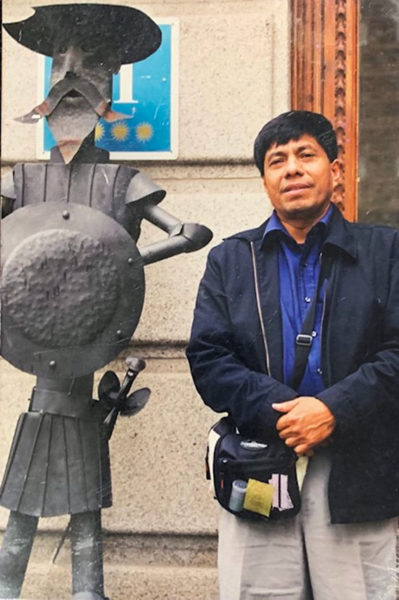
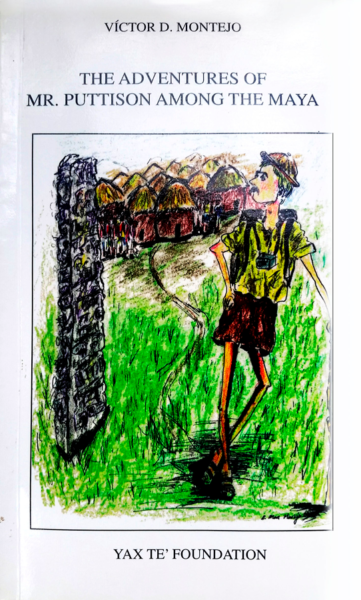
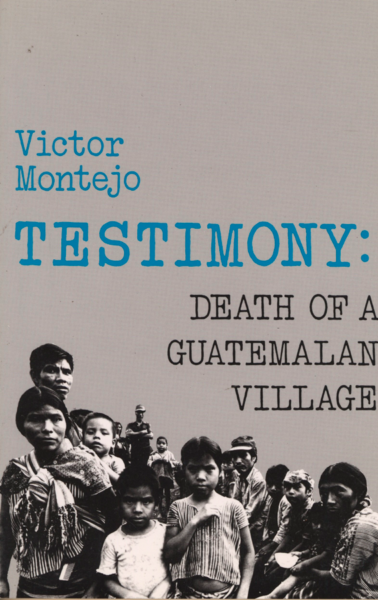
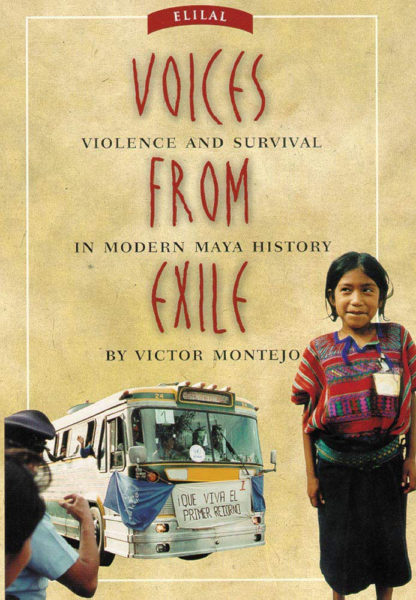
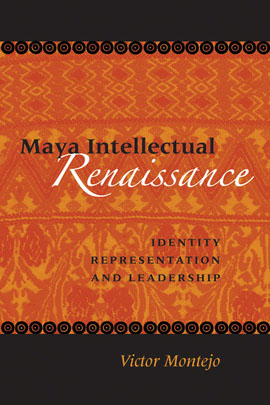
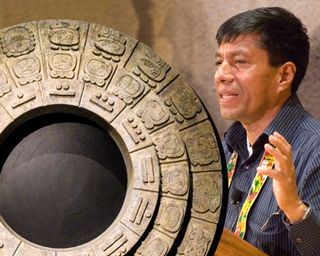
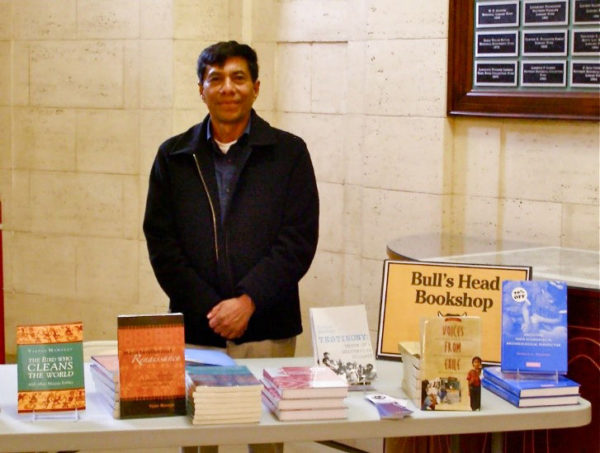
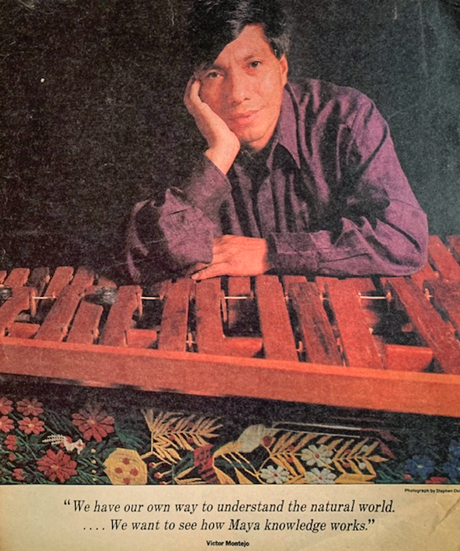
Pingback: Entre Dos Mundos (Between Two Worlds: A Memoir) by Victor Montejo, Reviewed by Mark D. Walker – Million Mile Walker
Pingback: Entre Dos Mundos: Una Memoria por Victor Montejo, La Revisión por Mark D. Walker – Million Mile Walker